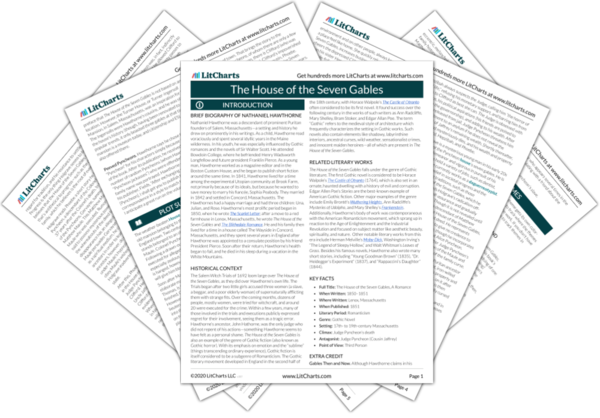Clifford’s story of this discovery, told when he was a boy, misled the Judge into believing that Clifford knew the secret location of Uncle Jaffrey’s alleged wealth. Of course, the deed is worthless after all. The portrait literally contained the truth of the situation all along. Now that Holgrave will marry Phoebe, the Pyncheon property will finally be restored to the Maule family.
